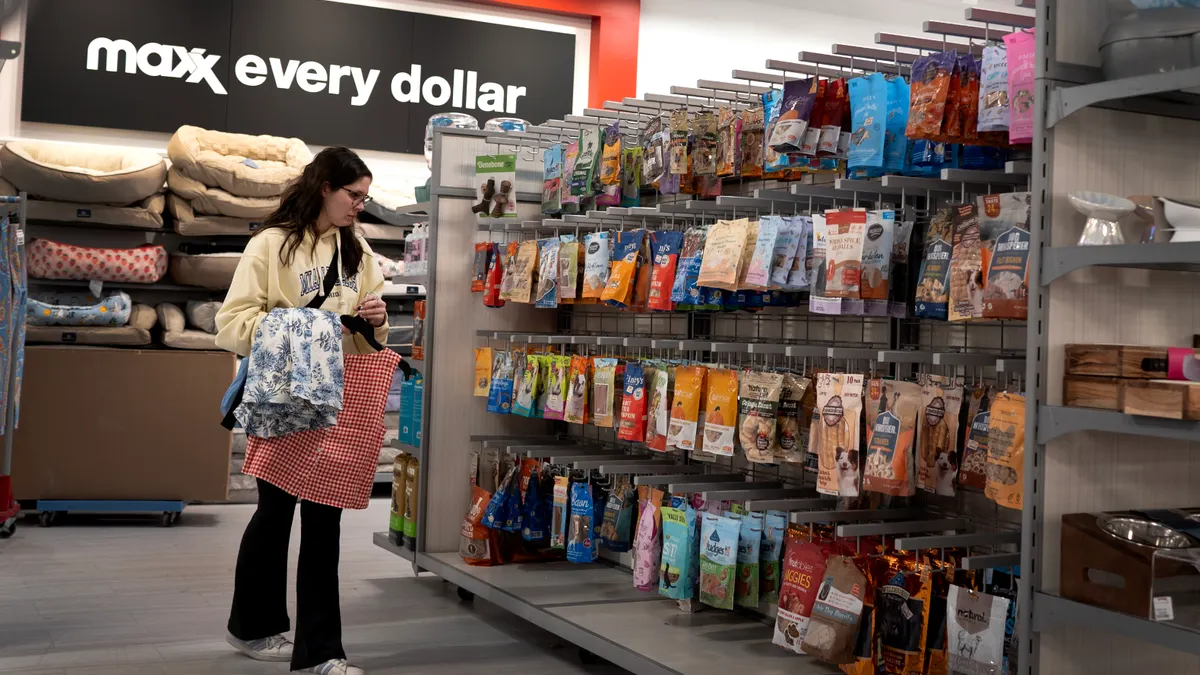Dive Brief:
- Customer satisfaction with businesses across U.S. industries stopped its steep decline but failed to improve in the third quarter 2025, the American Customer Satisfaction Index said Thursday.
- On a 100-point scale, customer satisfaction remained unmoved from 76.9, down from an all-time high of 78.0 in the first quarter of 2024.
- While unchanged, the third quarter score “follows a steep decline and long-term stagnation that is a slow-moving threat which, if not reversed, might inflict severe damage to economic growth,” ACSI said.
Dive Insight:
As customer satisfaction stagnates, consumer sentiment slumped to a three-year low on fears of economic uncertainty and the government shutdown, the University of Michigan said earlier this month.
Businesses should take the measures as a warning sign, ACSI says.
The ACSI’s Claes Fornell points to a lack of competition as reason for the unmoved satisfaction. The professor emeritus of business administration at the University of Michigan says businesses are failing to win customers over and instead are capitalizing on a condensed market.
“When sellers make profit because buyers have limited choice, the economy suffers,” Fornell said in a press release. “Sellers are supposed to strengthen buyer relationships by providing buyer satisfaction superior to that of their competition. If they do, they would be rewarded. If they don’t, consumer and equity markets render punishment.”
However, the market economy is not working as it’s supposed to, according to Fornell. Consumer switching costs have risen in the past decade, “with less competition as a result,” and an increasing number of customer complaints, the ACSI said.
But Jon Picoult, founder and principal of Watermark Consulting, cautions against reading too much into a single quarter’s results.
“The best benchmark for a CX professional is that of their own company’s historical data – measuring, tracking and improving customer satisfaction in their own organization over time,” Picoult said.
Where the ACSI can be helpful is looking at industry-specific data, Picoult said. Industry-specific data “can shed some light on just how well a particular sector is doing with regard to customer experience — thereby revealing whether it’s a marketplace that’s ripe for CX differentiation, or one where the bar is already set high.”
That’s not to say that CX professionals shouldn’t look at the big picture. The latest nationwide ACSI data indicates inflation may be putting some downward pressure on customer satisfaction, Picoult says, which should impact CX strategy.
“It would potentially signal the start of a period where customer satisfaction will be more strongly influenced by perceptions of value,” Picoult said. “That would have important implications not just for how businesses price their offerings, but also how they articulate and accentuate the value that they are delivering to their customers.”
The desire for value is already apparent ahead of the holidays, as consumers are looking to cut back on spending and make sure they’re getting the best item for their money.
Where customers can switch to save money, they are. Loyalty, across a number of measures, fell globally, SAP Emarsys said last month.
Two-thirds of respondents said they have switched from a brand they were once loyal to because of cost, according to SAP Emarsys. In the U.S., more than one-quarter of consumers said they can “no longer afford to be loyal” due to tariff-caused price hikes.














